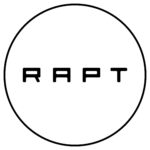 By Dominique Pienaar, CEO of DUO Marketing + Communications
By Dominique Pienaar, CEO of DUO Marketing + Communications

Digital disruption in the Public Relations and communications landscape means that brands and their agencies now need to work closer together than ever, in order to identify new storytelling opportunities, publishing platforms, and harness data analytics to continually refine how and where they place their messaging.
Being a specialist technology agency, we regularly come across examples of how organisations from a variety of industries are changing as a result of digital disruption, and it becomes increasingly apparent that similar changes are underway in the broader marketing and communications sector.
These disruptions in our industry take many forms – be it the way in which modern day media houses and platforms work, how stories are sourced and the way in which media relations is practiced, how we measure the success of a campaign, and even how communications services are packaged.
Traditional media seem to be the hardest hit by these changes, as readers increasingly turn to online, including social media platforms, in order to get their daily dose of news and information. Not only have we seen a decline in the overall number of publishers, but those that survive are increasingly turning to options such as requiring advertising to be featured, and paywalls in order to raise revenue.
Extending reach and engagement
An increasing number of online publishers are now offering custom native content campaigns that include written and multimedia content that feature hyperlinks to drive referral traffic to a brand’s website or campaign-specific microsites.
While brands or their agencies can try place more emphasis on expanding content reach through using social media or various forms of digital advertising, such as banner and search engine ads, online publishers offer brands an established audience that are highly relevant to their industry vertical.
Extending analytics from social or native campaigns and onto a website enables brands to track how website visitors interact; it helps them move away from simply looking at a CPC or CPM value, and learning which content can help them generate leads.
The longer term benefits of such campaigns is to keep track of the new users referred to by the publisher’s website, and use this audience as part of broader search engine and social media remarketing campaigns. There’s also a benefit to a brand’s link building strategy by having referring links appear on reputable websites.
Despite this increase in paid for opportunities, a space still exists for well-crafted thought leadership articles on these paid for opportunities, brands primarily aim to showcase specific products or solutions, in an effort to draw in potential customers that they can add to their marketing and sales funnels. However, this is just another from of advertising, with publishers often being required to clearly state that the content is sponsored for.
Robots and data
Add to this, publishers, such as the Press Association, who are now turning to artificial intelligence (AI) and machine learning to write press releases. While the technology is not expected to replace journalists anytime soon – it relies on human input to automate reports on health, crime, employment and other subjects where statistics are available – there will have to be a change in the type and format of content that is issued to media going forward.
This step forces both public relations agencies and the brands that they work for to speed up the process through which content is conceptualised, created, approved and distributed. They increasingly have to construct stories that bring in voices and opinions, and the human angle that pique the interest of the readers – the why rather than the what – something a data-driven bot still can’t do.
But we can’t escape from data: according to Cognito’s Communications and Marketing Survey for 2018, 79% of respondents considered data analytics to be the technological development with the highest impact, followed by marketing automation (57%). The report surveyed 165 respondents across multiple sectors including banking, asset management, wealth management, FinTech, insurance, technology and professional services across the US, EMEA and APAC regions.
Digital transparency is a must
Brands need to find the balance between native campaigns and solid, earned public relations, which allows the organisation to build its reputation, create brand presence, engage and forge a relationship with an audience and earn their trust. However, since most publishers have an online presence for their normal news too, it is essential that PR and native campaigns work hand-in-hand in order to achieve the above, and to build an authentic and authoritative digital presence for the brand.
Unlike printed content, having real-time access to native campaign analytics means that we know exactly how many people have read an article, or clicked on a banner advert, allowing for content and images that do not perform as well to be changed, and quickly.
As such, there has to be increased transparency between the agency and the brand around SEO, keywords, and best performing AdWords (to assist with content generation); and with access to website analytics (to understand which native content has a higher rate of generating leads, or if earned media or native campaigns are leading to referral traffic from a publisher).
Today’s PR workforce increasingly needs to understand the basics of digital, how it impacts the work they do, and to be able to collect and make sense of all the data they now have at their disposal – a treasure trove that can help brands identify which messages resonates with readers, common queries or misunderstandings, and identify pressing topics that can be further explored through clear and concise messaging.
- MRF Unveils Latest MAPS® Data - 20th February 2025
- The BRC announces changes to the board and updates for 2025 - 17th December 2024
- Top 50 DSTV TV programmes – October 2024 - 12th November 2024






